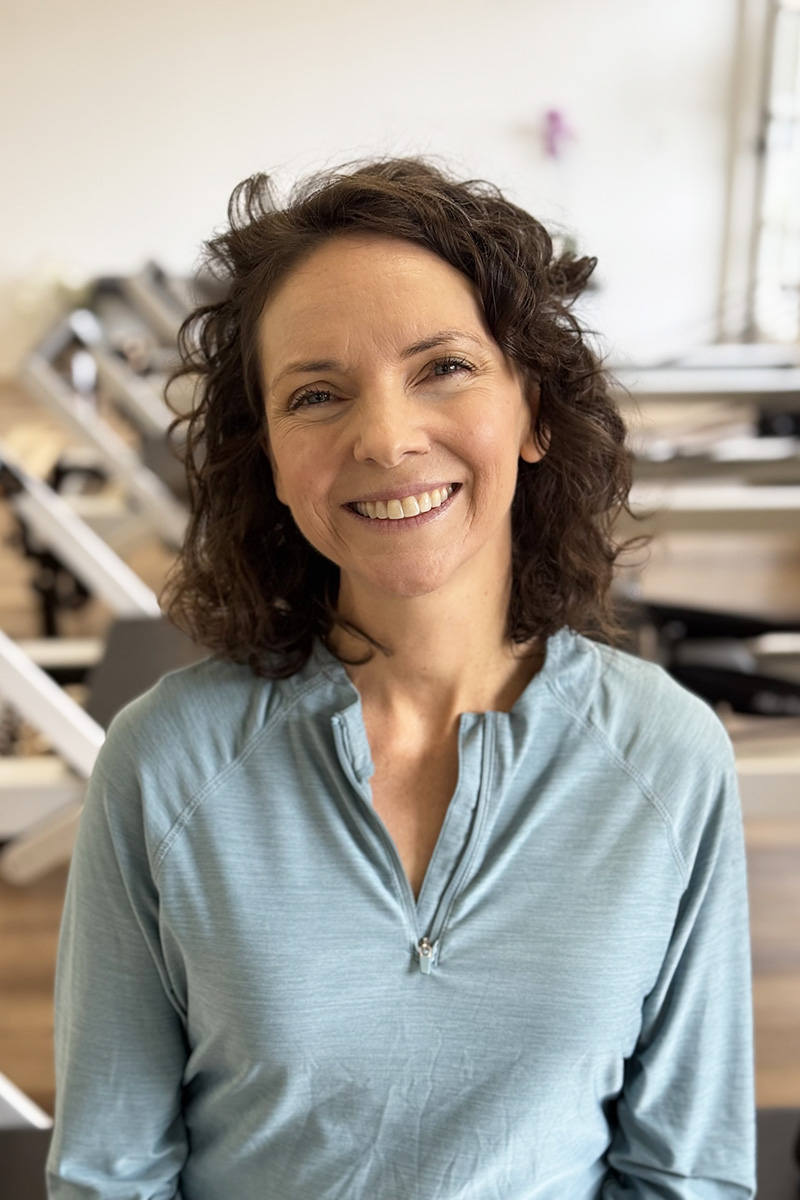Pilates and Pregnancy: Your Complete Safety Guide

Is it safe to do Pilates if I’m Pregnant?
Yes, Pilates is safe during pregnancy, and exercise in general is recommended by healthcare professionals throughout. Following ACOG (American College of Obstetricians and Gynecologists) guidelines, pregnant women can safely practice Pilates by avoiding: prolonged time on back after 20 weeks, high fall-risk positions (such as standing on the reformer), overheating, and any exercise that causes general discomfort.
Christina Flynn, Lead Teacher at BOLD Pilates Encinitas, gives us a great overview of the things expectant mothers should keep in mind when starting or continuing a Pilates practice.
Watch below:
Video Transcript:
Pilates During Pregnancy: A Safe and Beneficial Practice
Hi! I’m Christina, and I’m the owner of BOLD Pilates here in beautiful Encinitas, California. As I’m filming this, you may or may not have noticed that I’m about thirty-three weeks pregnant, and I am here to tell you that I have been doing Pilates throughout my entire pregnancy. I am here to reassure you that it is absolutely safe and even recommended to continue exercise during pregnancy.
Exercise Guidelines for Pregnant Women
Pregnant women, just like any other healthy adult, should be following physical activity guidelines of 150 to 300 minutes of moderate intensity or 75 minutes of high intensity cardio exercise per week, 2 to 3 resistance training sessions per week taking all major muscle groups to failure or near failure, and throwing in some balance and flexibility training depending on the person and their individual needs and goals.
It is always a good idea to check with your healthcare professional before starting a new exercise regime, but unless you are a high-risk pregnancy, it is actually recommended that pregnant women continue exercising during their pregnancy or start to exercise during pregnancy if they are not already.
It not only benefits the mother, it also benefits the baby. There are only four guidelines that you need to follow in order to keep you safe during any trimester of your pregnancy. Here at Bold Pilates we follow the ACOG guidelines which stands for the American College of Obstetricians and Gynecologists.
The Four Essential Safety Guidelines
1. No Prolonged Supine After Twenty Weeks
No prolonged supine after 20 weeks. Supine just means you’re on your back and it is recommended that you don’t stay flat on your back for a long period of time. Prolonged period is not specified by the ACOG guidelines, but at BOLD Pilates, we take that to mean 30 seconds to a minute. So we avoid having you lying flat on your back with your head and your hips at the same level.
If your head was above your hips or your hips were above your head for bridges or short spine, that would be fine. But you know, most pregnant women don’t actually feel that comfortable lying flat on their back after 20 weeks, so we just avoid that.
2. Avoid High-Risk Activities
The next guideline is that we just avoid any high-risk activity that could cause blunt trauma. So in Pilates what that means is that we’re not standing on a reformer doing funky things that could be a fall risk at any part of the pregnancy.
We maintain a stable base of support. You’re either sitting on a box, standing next to the reformer, or kneeling on a reformer with your hands on a solid surface. But you’re not doing anything that is high-risk where you could easily fall and cause blunt trauma to your tummy.
3. Stay Hydrated and Avoid Overheating
The third guideline that we follow is just making sure that you’re staying hydrated and not getting overheated. It is totally fine to build up a sweat, to get your blood pumping—all those things are absolutely fine. It’s just that you don’t want to be doing hot Pilates in a boiling room where your body temperature can’t regulate, which is not how we do things here at BOLD Pilates anyway.
We make sure that the temperature in the room is a very comfortable temperature for everyone. And if you’re pregnant and you do tend to get overheated, we do have fans that you can put directly on yourself to make sure that you are able to cool down.
4. Maintain Comfort
The last way we keep our pregnant women safe and confident is to have them maintain comfort. So for every pregnant woman that’s going to be something different.
Some pregnant women won’t want to lie on their tummies after 15 weeks. Some may be able to do it all the way through their third trimester. Me personally, I don’t love being on my tummy now that I’m about past 25 weeks. I could do it up until then, but I just don’t feel as comfortable with it and that’s fine.
Some women won’t feel comfortable doing challenging abdominal work. Some will. I continue to do teasers and all sorts of fun and challenging abdominal work in Pilates even at 33 weeks pregnant.
Summary
So that’s it. Those are the four things that you need to follow if you’re pregnant:
1. No prolonged supine after about 20 weeks
1. Reduce fall risk—make sure that you’re not doing anything that will cause you to fall down
1. Don’t work out in a hot room that has no airflow and stay hydrated. You’re just bringing a water bottle, taking breaks, and getting water whenever you need to
1. Finally, maintain comfort. If an exercise doesn’t feel right for you, just let me know and I’ll help you find something that does
But I’m here to encourage you that you can definitely start Pilates for the first time or continue your Pilates practice throughout your pregnancy here at BOLD Pilates. I plan to do Pilates right up until my C-section at 39 weeks. I hope this helped to answer any questions you had about exercising during pregnancy. And of course, these guidelines apply to any sort of exercise that you enjoy, not just Pilates.
And if you are pregnant and you want to come to class at BOLD Pilates, just let us know and we make sure to keep you and your baby safe and comfortable in any of our group reformer classes.
Thanks so much. See you in the studio!



